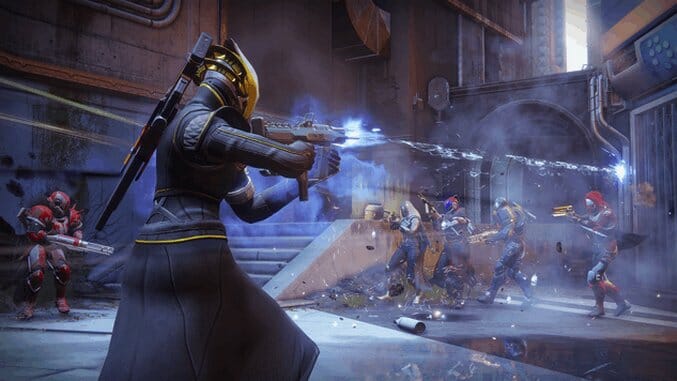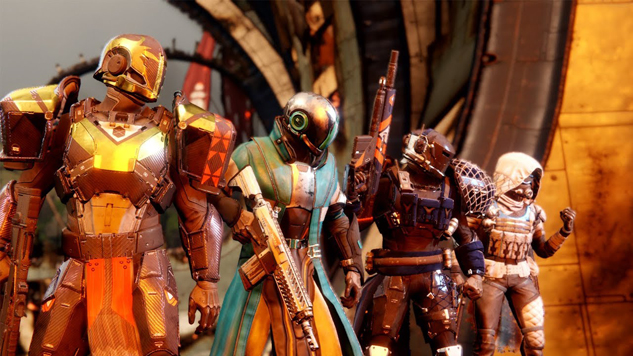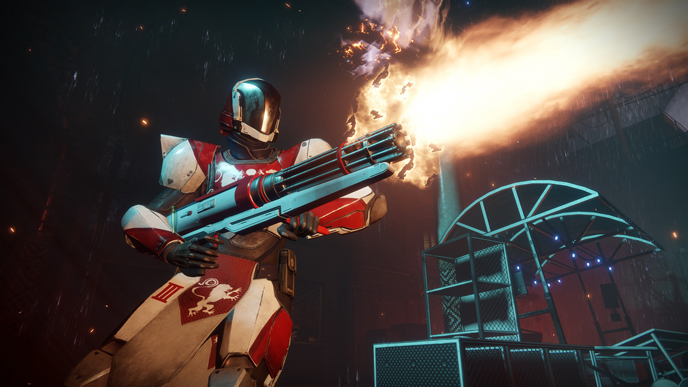5 Things Destiny 2 Can Learn From Other Open World Shooters

Destiny 2 is undeniably a smash hit. But now that the dust has settled on the initial launch, it’s getting easier to see some of the game’s weaker points, and muse on how these might be addressed in future content updates or new installments of the series. Destiny 2’s biggest problem seems to be its repetition, and for that ailment, there are several remedies, some that we’ve already seen in game. Here’s are some lessons Destiny 2 can take away from other open world shooters.
5. More worlds/planets/maps
Let’s start with the most obvious way to break up the monotony: more maps and more planets. Take Borderlands, for example. While there was a lot the series did to contribute to the “Press X To” banality of modern shooters, it did do one thing right. It had tons of areas to explore and revisit if things got boring. Pop open that New-U Station and there’s a list of locations as long as your arm to sift through, each with their own quirks and hefty BadAss achievements to keep you motivated.
The DLC for Destiny 2 will obviously address this problem at least somewhat, but across the board, people want a change of pace—look at the many map packs for shooters like Call of Duty, Titanfall, and Battlefield. The easiest way to make things more interesting is to offer as many different environments as possible.
4. Shorter missions, and more of them
This may seem counterintuitive, but instead of longer, fewer missions, they should be more abundant, and less time consuming.
Hear me out—while having too many quests can be just as draining as playing a mission that goes on too long, obviously, you can’t put a handful of them on a moderately sized map and call it a day.
But neither can have you have too many quests, especially if the story isn’t maintaining interest. The missions start to feel like a drag, and at that point, the player’s attention span is being abused. When it comes to open world shooters, most folks expect to “get in and get out”; the freedom of being able to play the game in shorter bursts is better for those with limited time. It should be as easier for players to fit the game into their schedule. And if each mission is fast paced but narratively dense, they will be satisfied with a modest amount of content. Destiny 2 needs to find a better middle ground between quality and quantity, and allow the player to engage the game on their own timetable.
3. Diverse dialogue for different character classes
Going back to Borderlands for a second (not a bad series to compare Destiny to, in that they’re both open world shooters set in space and both are accused of being too repetitive), one of the key ways the series was able to keep things interesting even in the face of so much grinding was to make the mission dialogue different for every character in the game. Sure, playing a game, oh, eight times through can be a bit much—but it’s less boring if the characters are funny, well-written, and have something of their own to say in each scenario. Of course, in Destiny 2, the Guardians don’t do any talking. But the Ghost, their dialogue proxy, could have more variety in their response depending on the Guardian class. In general, having a silent player character doesn’t help in terms of staving off player boredom. Bungie should give them a bit more identity and vary it from class to class. It would really improve each playthrough—and from what we’ve been shown of Cayde, we know they’re already skilled at writing big personalities.
2. Faster class type rotation
One thing that I liked about the recent Agents of Mayhem was that it allowed the player to rotate between a roster of three characters during a mission. It enabled them to become quickly familiar with each agent and, in doing so, encouraged them to play with every one. It was also a great way to ensure they could rapidly and strategically swap out the skills they needed based on the situation, reinforcing their knowledge of the characters’ strengths and weaknesses. In terms of familiarizing players with the full team, it worked wonderfully.
Destiny 2 shouldn’t pursue this exact feature per se, but they should make it easier for each class subtype to be switched out while playing. The gameplay doesn’t stop when the menu is open, so changing it manually is dangerous, not to mention laborious. The player instead should be encouraged and rewarded for using all three subtypes to their advantage. To maintain some of the difficulty, they could impose a cooldown rate for swapping between classes. It would be a subtle but worthwhile change.
1. Move on from fetch quests and shooty shooty bang missions
When The Elder Scrolls: Skyrim first came out, there were a large number of fans that were extremely disappointed with the direction Bethesda took with writing the missions, saying that, compared to Oblivion, they all boiled down to a simple structure: go find a thing in a cave, kill all the Draugr, repeat. It was a complaint that I didn’t understand until Fallout 4 came out, and by then, it was too late. The rich, nuanced storytelling I’d enjoyed in Fallout: New Vegasand Fallout 3 was gone, replaced by repeating side quests and endless location-clearing missions, and suddenly, I understood the Oblivion fans completely. In terms of cosmic fan retribution, I got what I had coming.
I think of that now, when I consider the missions of Destiny 2. It’s a game where the narrative was built around the mechanics, not vice versa—and it shows. I realize that while playing Destiny 2, I mentally check out through most of the missions, in part because I know I can. The quest will never require anything more of me than shooting a bunch of bad guys, collecting nondescript scavenge items on patrols, and occasionally jumping on some platforms. In part, this is because the Guardians only engage with their environments in the most superficial of ways, wiping out entire armies of robotic and alien villains during missions that are designed on the idea of what conflict might exist on that particular planet, without narratively investing in any real characters who might live there. And true, the goal of the game is to provide a backdrop for fast-paced shooting, and provide an entertaining excuse for the player to do so. Nonetheless, Destiny 2 comes off as a game where the story was written around the shooting, rather than the shooting around the story. And other games, like the aforementioned Fallout: New Vegas, show that a balance can be struck between the limiting premise of first person shooters, and the slog of narrative-driven games. Destiny 2 would be better off for trying to achieve that.
Holly Green is the assistant editor of Paste Games and a reporter and semiprofessional photographer. She is also the author of Fry Scores: An Unofficial Guide To Video Game Grub. You can find her work at Gamasutra, Polygon, Unwinnable, and other videogame news publications.




